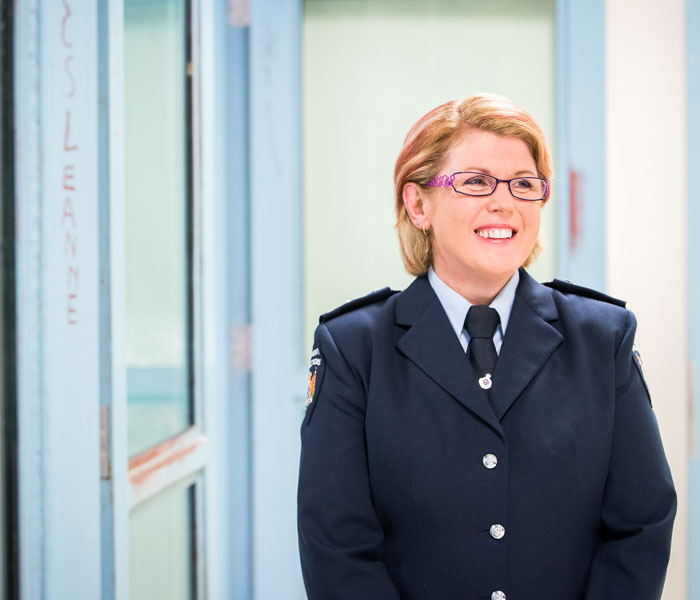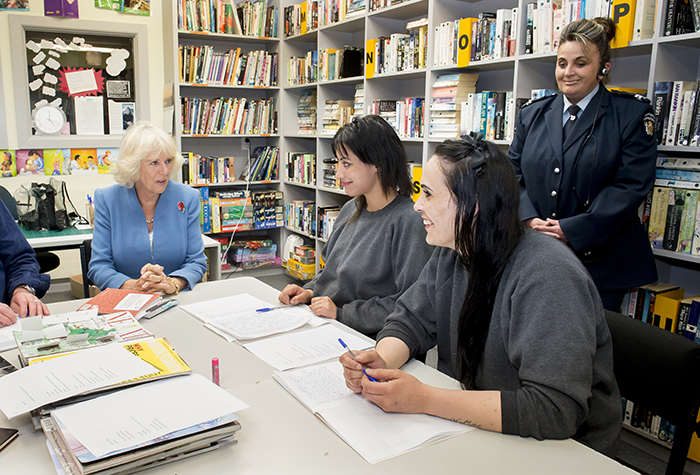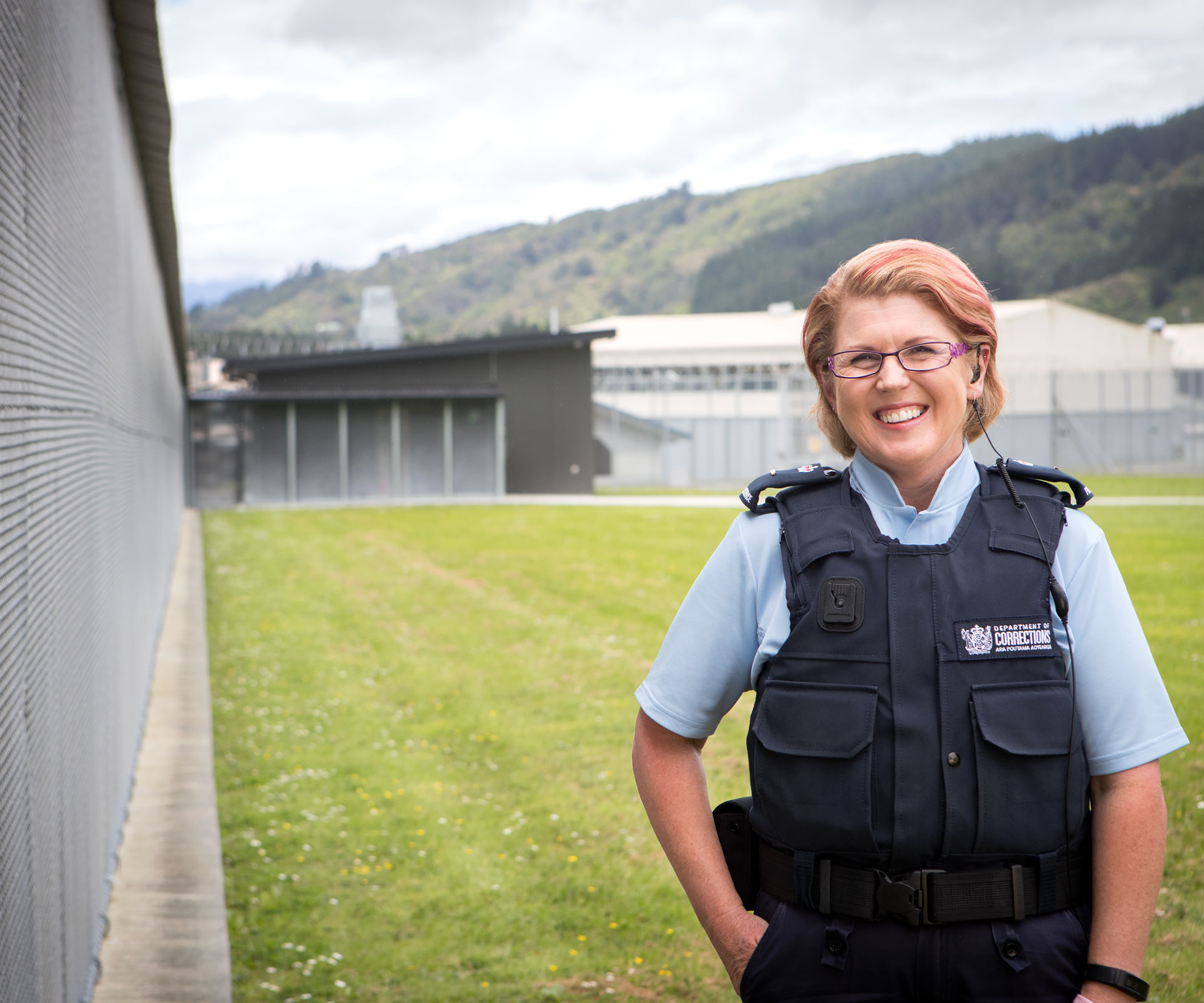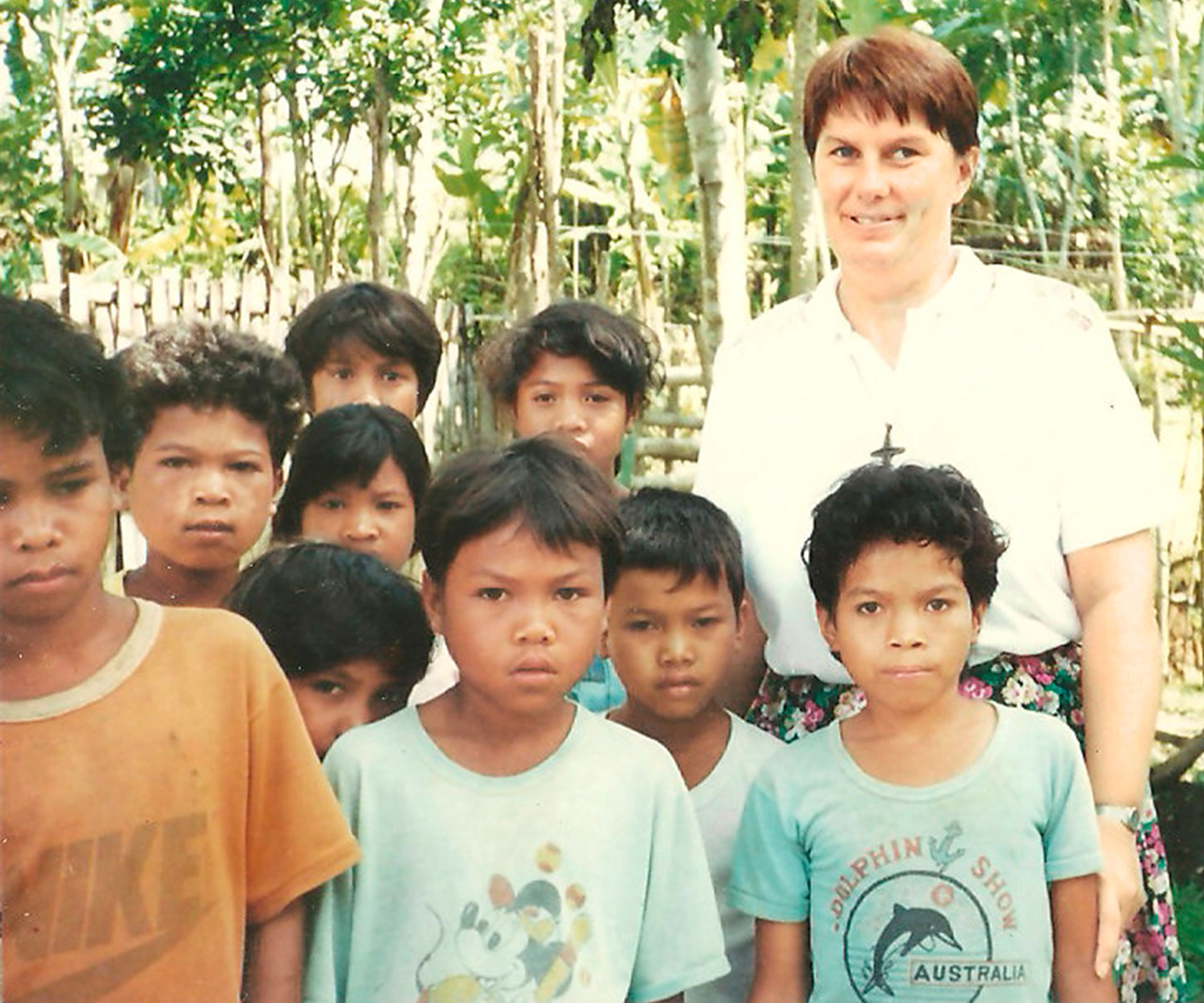Being sent to prison is a punishment, but thanks to the work of dedicated Corrections officers and community volunteers, incarceration is also an opportunity for many inmates to transform their life.
This is the first in a series of stories about women who work and volunteer within the New Zealand corrections system.
It is inside the towering fences and jagged razor wire encircling New Zealand’s largest men’s prison that Viv Whelan says she is truly at home.
A small, softly-spoken woman, her blonde hair streaked with pink, Viv is 55 and a grandmother. For a long time, she was a Karitane and Plunket nurse, who weighed babies and ran playgroups.
Now she cares for some of the toughest criminals in the country in her role as deputy prison manager of both Rimutaka, home to 1000 male offenders, and Arohata, with 88 women prisoners.
This is her 15th year working for the Corrections Department, which manages the 10,000 people in New Zealand’s prisons and 30,000 offenders in our communities.
Some would probably call it a life sentence. But Viv is far from the hardened face we might envisage at the forefront of our maligned penal system. She speaks with emotion about the job she loves, about how it gets under her skin; and about her passion for the “people in her care”.
“These men are not different to our children,” she says from inside Rimutaka in Upper Hutt. “They need boundaries, rules and regulations. But they also need a voice, they need to feel loved and to know someone cares about them.”
Our prison population has just hit a record 10,000 – the impact of longer sentences, less parole releases and fewer people receiving bail. But there is still recognition that the country has to stem the flow of people not just entering jail, but returning time after time.
The government has admitted its five-year goal of reducing reoffending by 25 per cent by 2017 is unlikely to be reached, although it says the number of former inmates repeating crimes has dropped significantly.
So for further change to come, who will step forward? Right at the front are women: those within Corrections, and those on the outside, who are volunteering to help make a life-changing transformation in the fractured world of our prisoners.

At 40, Viv had a “mid-life crisis”. After working as a Plunket nurse and raising her own two children, she wanted a new career; one where she could still make a difference to people’s lives.
“I rang both Corrections and the Police and within three weeks I was working at Wanganui Prison.
“What motivates me is a passion for people. I’ve worked in prison, in probation, at the Corrections national office, and finally I’ve come full circle. I’m back inside. I’m home.”
In her latest role, as second-in-charge of Wellington’s two prisons, she measures her success in small ways.
“It’s all about the people in my care – when the door shuts behind them and they are safe, or when my staff go home safe, that’s a successful day,” she says.
“Prison isn’t about deprivation and despair. People get the idea that it’s a place of violence, and yes, we have some violence and tough days. But there is so much hope here, so much enthusiasm from our staff to make things best for the people in their care.”
Viv doesn’t gloss over the realities of a job in a prison, especially for a woman. She readily confesses there have been times when she has felt afraid or threatened, especially starting out as a Corrections officer in 2002.
“But in Wanganui, I was trained well by long-serving prison officers. There are times when you have to go away and have a meltdown, away from the guys,” she says.
Rimutaka has had its share of very public troubles in recent years – with contraband smuggling, brutal assaults and prisoner escapes. Problems that are spread across the prison system. Viv sees it as her job to confront issues with transparency and integrity.
“It’s where my maternal background comes in. They get a strop up, get put in their places, but integrity is critical to me. Doing the right thing at the right time, all the time, is important,” she says. “I think we’re getting there.”
Viv has 450 Corrections staff under her wing, rostered between Arohata (in Tawa) and Rimutaka. She admits both prisons need more staff, something that’s reflected in the Corrections Department’s latest drive for 600 new recruits to keep up with the growing prisoner muster.
It’s not an easy sell, but there has been a concerted effort to demystify the Corrections roles.
“When I started, you would never dream of talking about your job. But it’s changed a lot. Prison guards are now called Corrections officers,” Viv explains. “It really is a profession, with a lot of opportunities. It’s a life, and it gets under your skin.”
A good Corrections officer needs life skills, good communication and resilience, Viv says.
“They need to be themselves. It can be a scary place, but they shouldn’t try to be someone they think they should be. We don’t want people in here who will judge the prisoners either,” she says.
She believes it’s critical having women in roles of authority in our prisons; 103 of her staff are female.
“As women, we provide a diversity and gender balance. The male staff appreciate it. And it’s really critical to have women working in a men’s prison too, when a lot of our male prisoners have been violent towards women, have no respect for women and are not used to women in authority,” she says.
“In a women’s prison, you also need a balance of staff. While the prisoners need male role models, when it comes to personal things, women like to talk to other women.”
MP Judith Collins, who was Corrections Minister until the recent Cabinet reshuffle under new Prime Minister Bill English, agreed that it is “incredibly important” for prisoners to see women in positions of responsibility.
“It builds respect,” she said. Corrections has 8200 staff and in the frontline of Corrections and probation officers, 45 per cent are women. The Minister said getting the right balance of male and female officers means a better run, happier prison.
“There’s often a different relationship between male prisoners and women Corrections officers because there is not that aggro. It can bring down tensions by having a different voice. It brings about better decision-making and a better vibe.”

Camilla, Duchess of Cornwall visited Arohata Women’s Prison in November, 2015.
One of the most critical factors in reducing the number of people locked away in our prisons, and ensuring they do not return to jail, is rehabilitation.
This year, for the first time, every prison in the country will be a “working prison” – all eligible prisoners are engaged in industry, learning and rehabilitation activities for 40 hours a week. The impetus is to help prisoners develop skills and experience that will enable them to find jobs and ongoing stability once they are released.
Last year more than 8300 prisoners completed rehabilitation programmes – an increase of 25 per cent. And 11,500 offenders spent 85,466 hours learning work and living skills involving road safety, parenting, budgeting, gardening and cooking.
Our prison system has also been dubbed one of the largest open polytechnics in the country. More than 4600 prisoners achieved qualifications last year. The subjects taught include food prep, cooking, building, gasfitting and plumbing.
Viv points out the work going on inside the wire at Rimutaka as she speaks – men creating papier-mâché bricks to be donated to families in need of heating; building raised garden beds; printing greeting cards in the prison’s commercial gift shop. Others are on industrial sewing machines making dog blankets for animal charity HUHA.
“We are constantly looking for creative, innovative ways to keep the prisoners busy, productive and contributing,” she says. “They have wronged the community, but this is a way of giving back, and getting them to feel good about themselves.”
Further north, the Auckland Region Women’s Corrections Facility – which can house 462 women – offers 152 jobs on site. Some of those are in the cafe at the prison entrance, where prisoners are given catering and barista training. The prison’s distribution centre, which sorts and sends out items bought by prisoners, provides the opportunity for women to gain experience in retail, warehousing and distribution.
“People have opportunities to go out and work in the community during the day, and stay in self-care units at night, and then keep up those jobs when they leave prison,” Judith Collins explained. “It is not available to everybody though. But it is to those who go down certain pathways and undertake their programmes, show their commitment and are utterly reliable.”
Women outside the prison system who are happy to share their skills for free are also becoming vital in the rehabilitation crusade. Around 1800 volunteers give their time to prisons and community correction sites each year.
While statistics show some progress is being made in rehabilitating our prisoners and shrinking the number of reoffenders, Viv has her own yardstick.
“How do I measure the success? When I don’t see them again. As they leave, I always say, ‘I will see you next time in the supermarket, not inside the prison.’”
Words: Suzanne McFadden
For more from The Australian Women’s Weekly, see the February issue. Follow us on Facebook or Instagram.




